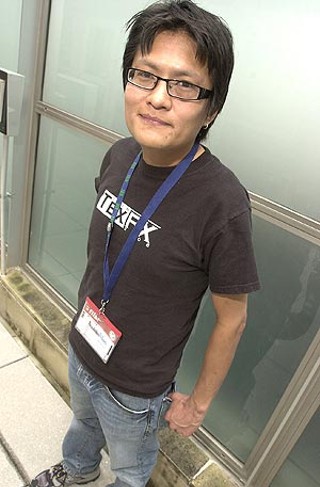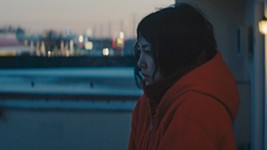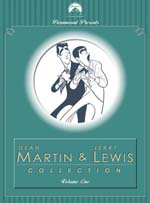Looming Issues: Bennie Klain on Weaving Worlds
Unpicking the traditions of Navajo rugs
By Steve Uhler, Fri., March 16, 2007

Native American Helen Bedonie has spent her life on an Arizona Indian reservation raising sheep, spinning and dyeing the wool by hand, and painstakingly weaving traditional Navajo rugs on a family loom. It's her art and her livelihood. After selling the finished rugs to an Anglo reservation trader for a few – a very few – hundred dollars, the same rugs will show up on display in a retail store with a $60,000 price tag attached, to be sold to tourists with deep pockets. "When you hand a rug to an Anglo person," she says, "they like to poke at it and overanalyze the art. They look for reasons to bring the price down." Which is bad news for Bedonie and others like her, but compelling subject material for Bennie Klain. Art, commerce, tradition, and cultural and economic exploitation are the interwoven themes in Klain's Weaving Worlds, a new documentary on the daily lives of Native American artisans. A UT film alumn, Native American, and Austinite, Klain spoke with the Chronicle prior to Weaving Worlds' world premiere at SXSW.
Austin Chronicle: Weaving rugs, making movies: Any common threads?
Bennie Klain: I can see parallels. Making a rug is really painstaking – there's a lot of fine detail that goes into it. I tried to capture as much of that detail as possible, so that people can get an idea of just how hard it is to make a rug. It's a year-round process; it doesn't just start with the loom, it starts with raising the sheep, shearing the wool, creating the design, selecting the colors. Filmmaking is kind of like that.
AC: The camera loves your subjects. How did you find your story and select your cast?
BK: I did another documentary several years ago that had done very well on the festival circuit, called Return of the Navajo Boy, and I'd been traveling with that for some time showing it at festivals. I went to the American Anthropological Association Conference with it, and there was a lady there who's a rug historian – her name is Kathy M'Closkey. She approached me and said we should collaborate on a project about Navajo rug weavers. She'd been studying the subject and observing some of the injustices that were going on and she wanted to bring some of those issues to a wider audience, and that sort of got the ball rolling. We were able to locate some of the weavers through her. I was really cautious with the weavers. I know there's a lot of exploitation that's gone on with the weavers. I didn't want them to think I was going to just come there and shoot them and leave. So the first thing I did when we did our first research and development trip was take a small tape recorder and pre-interview them – asking what were their concerns, what did they want to talk about? I wanted them to know that I wasn't one more person that was there to exploit them. Also, I could speak the language with them, and that really helped.
AC: There seems to be either an inability or unwillingness for the weavers to organize against the trading post buyers that exploit them.
BK: I think one of the reasons that the weavers have been unable to unite so far is because their nearest neighbor is like five miles away, and a lot of them don't have transportation. So such simple things as communication get complicated when you live in a rural area like that. But with the advent of the Internet and cell phones, I think that gap is going to close. A lot of the weavers have started weaving co-ops so they can kind of unite under one voice. Hopefully they can start a Web site where they can sell their rugs directly and eliminate that middleman. I want to use the film as a tool to empower the weavers, and I hope it's something they can use.
AC: You've been to South by Southwest before as an attendee ...
BK: I've been attending South by Southwest every year, but this is the first time I'm actually coming as a filmmaker with something to show here, so it's a whole different sort of experience for me. Networking is not my favorite thing; it's intimidating to me. But it's been easier this year because I actually have a project to talk about. It's easy to go to a festival and say, "I'm working on a film right now and blah, blah, blah." It's a lot different when you actually have something to show. The Austin filmmaking community has always been really good to me. I moved here to go to the UT film school. I've since graduated, and I'm still here, so that says something about what's kept me in Austin all these years.
7:30pm, Dobie










